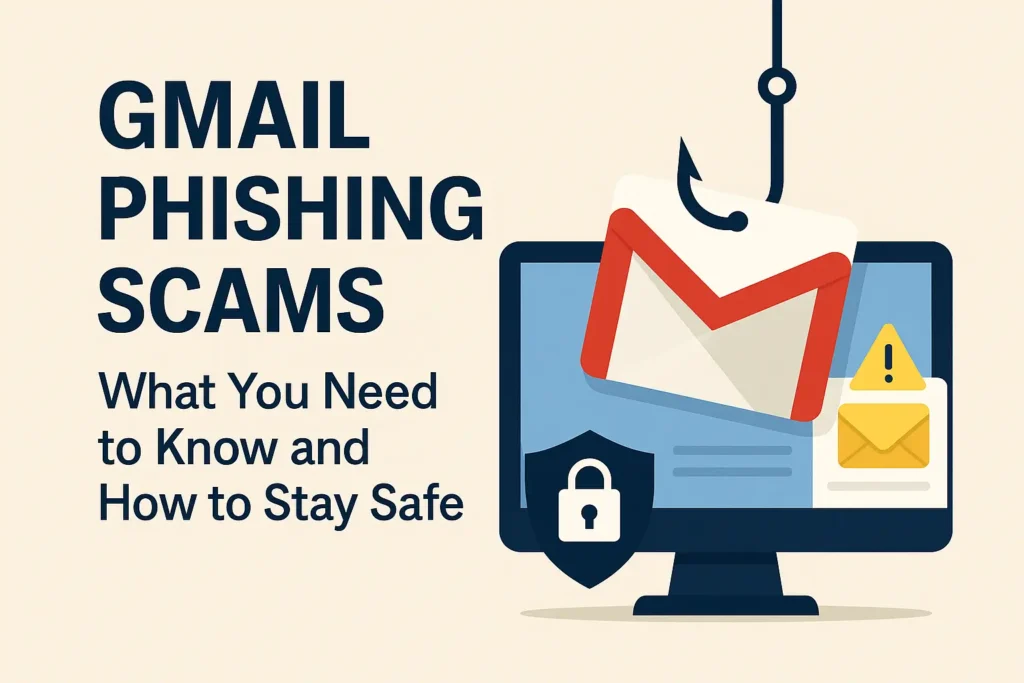According to Forbes, Gmail users are facing a new wave of Gmail phishing scams that are more sophisticated than ever before. These attacks disguise themselves as official communications from Google, using advanced techniques to bypass detection and trick even cautious users. Here’s what you need to know about these threats—and how to protect yourself effectively.

What’s Happening?
Cybercriminals are exploiting security gaps and trusted platforms to make their phishing attempts look legitimate. Recent scams include:
- Emails that appear to be from Google, written in professional language and often free of grammatical errors.
- Messages claiming legal or account issues, such as a subpoena for your Google data.
- Fake Google sign-in pages hosted on Google’s own infrastructure—specifically Google Sites—which makes the scam look more credible.
These phishing campaigns are particularly dangerous because they use legitimate Google tools (like no-reply@google.com and Google Sites) to deceive users. Attackers are also using OAuth applications and other technical methods to bypass traditional detection systems.
Why This Matters
While phishing is not new, these scams represent an evolution in tactics:
- Trusted platforms are being misused. Hosting malicious pages on Google Sites helps bypass suspicion and filters.
- Security layers are being mimicked. Many of these emails pass verification checks like DKIM, making them seem trustworthy.
- User trust is being exploited. Scammers rely on Google’s reputation to lower your guard.
What Google Recommends
Google is constantly working to block phishing attempts—reportedly filtering out 99% of them. However, users are still urged to take additional steps:
- Stop using SMS for two-factor authentication (2FA).
Text messages can be intercepted. Switch to:- Passkeys
- Google Authenticator
- Biometric verification (fingerprint or facial recognition)
- Set up a Passkey.
Passkeys provide a more secure, passwordless way to log in and reduce phishing risks. - Never share your credentials.
Google will never:- Ask for your password or one-time passcode
- Ask you to confirm a push notification
- Call, email, or message you asking for account information
Real-Life Example
Developer Nick Johnson shared an experience where he received a phishing email that claimed Google had been served a subpoena requiring his account data. The email:
- Was sent from
no-reply@google.com - Was professionally written and error-free
- Passed DKIM authentication checks
- Directed him to a fake Google support page hosted on Google Sites
Although the sign-in page looked authentic, the URL revealed it wasn’t a real Google login page. If he had entered his credentials, his account would likely have been compromised.
How to Protect Yourself
Here are the key tips from security experts:
✅ Be skeptical of urgent messages.
Emails that warn of immediate consequences are often scams.
✅ Check the sender’s email address.
Look carefully at the “From” field. If it seems unusual or unfamiliar, be cautious.
✅ Avoid clicking links in emails.
Instead of following links, go directly to the website by typing the URL in your browser.
✅ Check the domain.
Google will never ask for login details on a Google Sites page. Real login prompts come from accounts.google.com.
✅ Report phishing attempts.
Use Gmail’s “Report phishing” feature to alert Google and protect others.
✅ Keep your devices and software updated.
Regular updates help protect against known vulnerabilities.
✅ Search suspicious content online.
Many phishing attempts are reported by others. A quick search can help you identify a scam.
Conclusion
Phishing scams are evolving and now use trusted tools and platforms to deceive users. While Google continues to strengthen its defenses, staying vigilant and using secure authentication methods is essential. Avoid SMS-based 2FA, never share your credentials, and always verify before clicking.
Remember: Google will never ask for your password or private authentication codes.
If something feels off, it probably is.